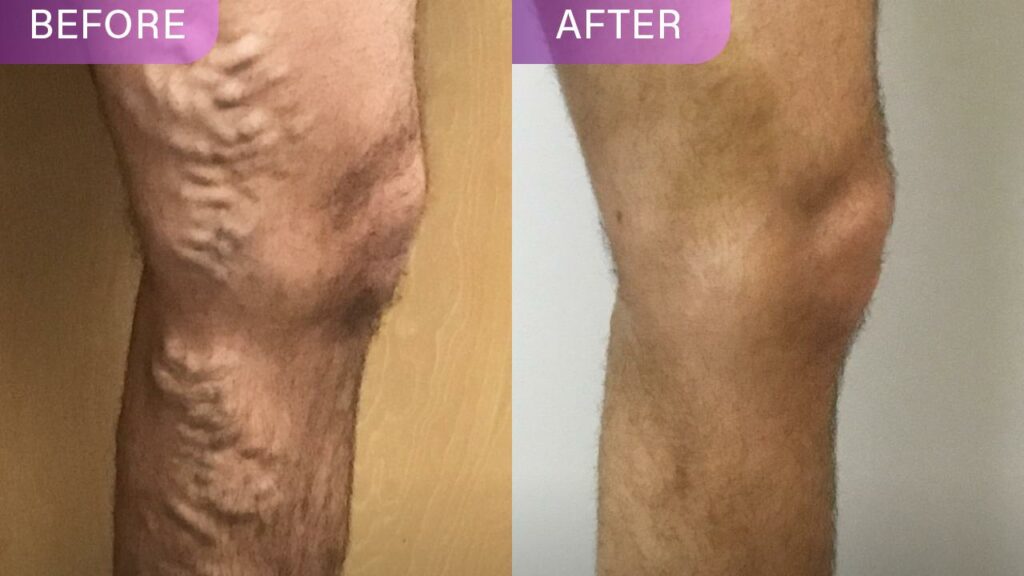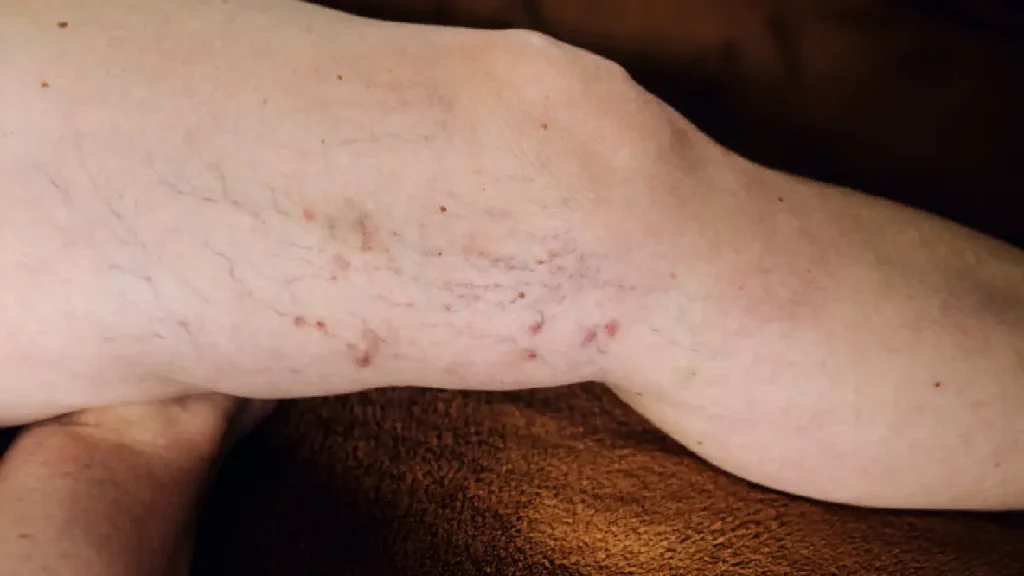Introduction to Spider Vein Treatments
Spider veins are those tiny, web-like veins that show up mainly on the legs and face, making many folks self-conscious. They’re more annoying than harmful, really. But hey, who doesn’t want clear skin, right? The good news is, getting rid of them is totally possible. Now, when we talk spider vein treatments, we’re looking at a couple of big hitters: sclerotherapy and laser treatments.
Sclerotherapy involves injecting a solution directly into the veins, causing them to collapse and fade. On the flip side, laser treatments beam intense light onto the veins, which basically makes them disappear into thin air over time. Both ways have their fans and their success stories. What’s important is finding what works best for your skin, your schedule, and your wallet.
Stick around as we dive deeper into these options and share some real-deal before and after cases that’ll get you thinking, “Maybe it’s time to zap those spider veins goodbye.”

Understanding Spider Veins: Causes and Symptoms
Spider veins are those small, twisty veins that you can see just under the skin. They’re usually red, purple, or blue and look a lot like a spider web, hence the name. They’re most common on the legs and face. So, why do they show up? It’s mostly about blood not flowing properly. When the valves in veins weaken, blood can collect instead of being pushed back to the heart. This causes veins to get bigger and become visible. Several things can make you more likely to get spider veins, like getting older, sitting or standing for a long time, being pregnant, or if it runs in your family.
Symptoms? Most of the time, spider veins are more about looks than pain. But sometimes, they can cause an achy feeling, especially after standing for a long time. If they’re really bothering you, or you just don’t like how they look, there are spider vein treatments that can help clear them up.
Evaluating Popular Spider Vein treatments
When tackling spider veins, most folks have heard about vein treatments like sclerotherapy or laser treatments. These methods really do lead the pack in terms of popularity. Sclerotherapy, for instance, is all about injecting a solution directly into the veins, which makes them shrink and disappear over time. It’s a bit like telling those veins, “It’s time to vanish!” and has been a go-to for many because it works well for a variety of spider vein cases. On the flip side, laser treatments bring the heat – literally. This method uses focused light to heat up the veins, causing them to collapse and fade away.
While both options have their fans, it’s crucial to know that what works like a charm for one person might not for another. The effectiveness of these treatments hinges on factors like the size and location of the spider veins, and, of course, how your body reacts to the treatment. In simple terms, some folks might see their spider veins clear up faster or more effectively with one method over the other.
Then there’s the conversation about discomfort and recovery. Sclerotherapy usually has a swift recovery time, letting folks get back to their daily grind without skipping a beat. Laser treatments, though, can sometimes be a tad more uncomfortable and might require a bit more downtime. But, don’t let that scare you off – we’re not talking about being out of commission for weeks. It’s more about giving your body a short breather to heal up and ditch those spider veins for good.
Ultimately, the best spider vein treatments for you is one that matches your specific situation, factoring in the severity of your veins, your health, and your personal comfort with the procedure. It’s a decision best made with a professional who can guide you through your options with the know-how to back it up.

Before Treatment: Preparing for Spider Vein Procedures
Before you dive into spider vein treatment, there’s a bit of legwork to do. First, schedule a chat with your doctor. They need to check your veins and overall health to pick the right treatment for you. Expect to answer questions about your medical history and any meds you’re taking.
Next up, some doctors might ask you to snap photos of your legs. Sounds odd, right? But it’s for tracking your progress. Also, brace yourself; you might need to pause certain medications and steer clear of sunbathing for a couple of weeks before your procedure. This helps in reducing potential complications and improves the effectiveness of the treatment.
Lastly, get your wardrobe ready. You’ll likely need to wear compression stockings after the procedure to help healing. Think of them as your new best friends for a while.
So, to sum up, chat with your doctor, possibly take some leg selfies, adjust your meds and sun exposure, and shop for some compression gear. You’re now prepped for the next step towards saying goodbye to those spider veins.
In-Office Spider Vein treatments: Sclerotherapy and Laser Treatment
When you’re looking to tackle spider veins, sclerotherapy and laser treatments are the go-to options in the doctor’s office. With sclerotherapy, a special solution is injected right into the vein. This causes the vein to scar and forces blood to reroute through healthier veins. The collapsed vein eventually fades over a few weeks. Laser treatment, on the other hand, involves directing strong bursts of light onto the vein, which makes the vein slowly fade and disappear. No needles or injections are needed for laser treatment. Both methods have their fans. Sclerotherapy is often preferred for larger spider veins, while laser treatment might be the choice for smaller ones or those on the face. Recovery from both treatments is quick, letting most folks get back to their daily grind without any downtime. It’s crucial to chat with a doctor about which option suits your situation best. Both treatments offer a way to say goodbye to spider veins, helping you feel more confident in your skin.

At-Home Remedies and Lifestyle Changes for Spider Vein Management
While we can’t always prevent spider veins, there are simple steps you can take at home to manage them or reduce your risk. First up, give your legs a break and elevate them when you can. This helps reduce the pressure in the leg veins. Getting your body moving is another game changer. Regular exercise, especially walking, improves your blood circulation and vein strength. Watching your weight also plays a critical part because less pressure means happier veins. Your fashion choices matter too. Avoid tight clothes that restrict blood flow and give high heels a rest; comfy, flat shoes encourage better circulation. Lastly, hydration is key – drink plenty of water to keep things flowing smoothly. Making these changes won’t erase spider veins overnight, but they can prevent new ones from popping up and may reduce the appearance of existing ones.
Real Patient Stories: Before and After Treatment Results
Hearing from people who’ve walked the path can shine a real light on the effectiveness of spider vein treatments. Take Sarah, for instance. Before her treatment, she felt self-conscious wearing shorts during summer. But after a series of sclerotherapy sessions, her legs looked clearer. She said, “It’s like I got a part of my confidence back.” Then there’s Mike, who opted for laser therapy. His spider veins were not only a cosmetic concern but also caused him discomfort. Post-treatment, not only did the appearance improve significantly, but he also noticed a substantial reduction in discomfort. “It’s like dealing with two birds with one stone,” he exclaimed. These stories echo a common sentiment: satisfaction and a notable boost in quality of life post-treatment. While treatments vary in approach, the consensus among patients is clear – tackling spider veins can lead to measurable and visually pleasing results.

Potential Side Effects and Recovery After Spider Vein Treatments
After getting spider vein treatments, most folks bounce back quick, usually rocking their normal routine the very next day. But hey, just like with any treatment, there are some side effects you might notice. Some people see redness or slight bruising around the treated area, but this usually waves goodbye in a couple of weeks. Feeling itchy or getting a bit of swelling isn’t out of the ordinary either – think of it as your body’s way of saying, “Hey, I’m working on fixing this.” Now, very rarely, but it happens, some might notice tiny skin sores, or the treated veins might look a bit darker. But rest easy, it’s unusual for these to stick around. Also, let’s not forget, recovery and side effects vary big time – what’s a walk in the park for some might be a bit tougher for others. If the side effects hang around longer than a friendly visit or if something just feels off, looping in your doctor is a smart move. They’ve got the know-how to make sure everything’s on track or to tweak things if needed. In the grand scheme, the road to recovery is pretty smooth sailing for most folks aiming to say goodbye to spider veins.
Maximizing Long-Term Success of Spider Vein Treatments
For long-term success in tackling spider veins, consistency and lifestyle adjustments play pivotal roles. After treatment, whether it’s sclerotherapy or laser, the journey doesn’t end. Here’s how you keep those results lasting:
- Wear Compression Stockings: Experts suggest wearing compression stockings for a certain period post-treatment. They help maintain pressure, reduce swelling, and enhance circulation, discouraging new spider veins from forming.
- Regular Exercise: Get moving. Activities like walking or cycling improve blood flow in your legs. Strong circulation is your ally against spider veins making a comeback.
- Healthy Weight Management: Extra pounds put unnecessary pressure on your veins. Maintaining a healthy weight is crucial in taking the load off your veins.
- Elevate Your Legs: Whenever you can, prop up your legs. It helps encourage blood flow back to your heart, reducing pressure on the leg veins.
- Avoid Long Periods of Standing or Sitting: Mixing up your position throughout the day keeps blood circulating and reduces strain on the veins.
Stick to these habits, and you’re not just maximizing the outcomes of your treatment; you’re fighting against future spider veins too. Remember, it’s not just about the immediate aftermath but ensuring those pesky veins stay gone for good.
Conclusion: The Importance of Professional Consultation for Spider Veins
Always talk to a pro before you dive into treatments for spider veins. See, not all treatments are a good fit for everyone. Different folks need different approaches depending on the spider veins’ size, where they are on your body, and other health stuff you’ve got going on. A vein specialist, also called a phlebologist, can give you the lowdown on the best options. They’ll check your veins, talk about what’s bothering you, and map out a treatment plan that’s right for your situation. Plus, tackling it with a pro means you’re more likely to see those real, solid results you’re after. And hey, they can also give you the heads up on what it’s going to cost and what you might feel during the process. Bottom line: Don’t skip the chat with a specialist. It’s the smart move to make sure you’re getting the right treatment and to boost your chances of waving goodbye to spider veins for good.






